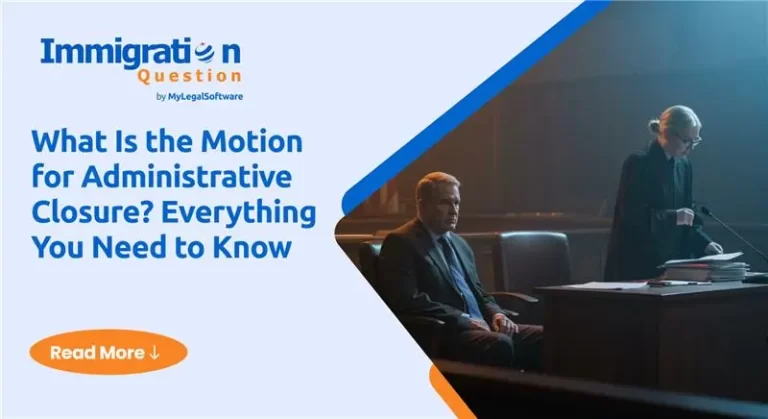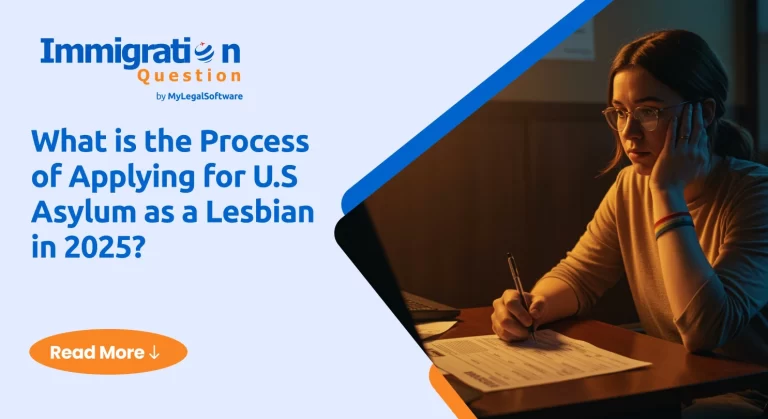When someone is detained by U.S. Immigration and Customs Enforcement (ICE), it becomes an urgent concern of the person’s family to secure their release. In many cases, this is done through an immigration bond, a financial guarantee that the individual will comply with all immigration court requirements after release.
Understanding how immigration bonds work—and, more importantly, how to apply for one—is important for people who have a loved one in detainment. In this guide, we’ll explain everything you need to know, from eligibility and costs to refund procedures and status checks.
What Is an Immigration Bond?
An immigration bond is a financial guarantee paid to the Department of Homeland Security (DHS) that allows a detained immigrant to be released from ICE custody while their case moves through the immigration courts. The bond serves as a promise that the person will appear at all future immigration court proceedings.
There are two main types of immigration bonds:
- Delivery Bond: This is the most common type. It allows someone to be released from detention with the understanding they’ll attend all future immigration court hearings. Think of it as a promise to “deliver” yourself to court.
- Voluntary Departure Bond: This applies when the detainee agrees to leave the United States within a specified timeframe by a certain date at their own expense. The money is refunded once the person provides proof they’ve left the country as promised.
Who Can Get an Immigration Bond?
Not everyone in ICE custody qualifies for a bond. Eligibility is determined during a bond hearing before an immigration judge or by ICE officers directly. Generally, a person may be eligible if:
- Must not be considered a “mandatory detention” case (certain criminal convictions make detention mandatory)
- Must not be deemed a flight risk or danger to the community
- Must not have outstanding deportation orders
- Must not be detained for national security reasons
Even U.S. citizens have been wrongfully detained by ICE. In such cases, providing proof of citizenship would lead to their release, though sometimes legal help is needed to navigate the process.
ICE or an immigration judge will consider factors like:
- Length of time in the United States
- Family ties in the country
- Employment history
- Criminal record
- Previous immigration violations
- Community connections
How Much Does an Immigration Bond Cost?
Immigration bond amounts is not a one-size-fits-all. It ranges from $1,500 to $25,000, though they can go higher in some cases.
Several factors affect the bond amount:
- Criminal history
- Employment status
- Immigration history (previous violations, deportations)
- Flight risk assessment
- Family ties in the United States
- Length of residence in the country
- Risk of fleeing or missing court dates
If you believe the bond amount is too high, you can request a bond redetermination hearing before an immigration judge. At this hearing, your attorney can present evidence showing why a lower bond is appropriate, such as strong community ties, family support, and a stable employment history.
How Do You Pay an Immigration Bond?
Paying an immigration bond involves several specific steps:
- Identify the obligor: The person who pays the bond (called the obligor) must be a U.S. citizen or lawful permanent resident (green card holder). They take legal responsibility for ensuring the detained person complies with all requirements.
- Contact the local ICE office: Call the ICE Enforcement and Removal Operations (ERO) office that has jurisdiction over the case to schedule an appointment to pay the bond.
- Gather necessary documentation: The obligor needs to bring:
- Government-issued photo ID
- Proof of legal status (passport, birth certificate, or green card)
- The full bond amount in an acceptable form of payment
4. Payment methods: ICE only accepts:
- Electronic bank transfers (Fedwire or ACH) via the CeBONDS online platform
- Certified cashier’s checks or U.S. money orders payable to the “Department of Homeland Security” (by appointment only, in exceptional cases)
- Note: Personal checks, cash, credit cards, and partial payments are NOT accepted. 5. Complete paperwork: The obligor must sign a filled Form I-352 (Immigration Bond) at the ICE office.
- Receive receipt: After payment, the obligor will receive Form I-305 (Receipt of Immigration Officer – U.S. Bonds or Notes). This is extremely important – keep it safe as you’ll need it to receive your refund later.
How to Check Immigration Bond Status
Staying informed about the status of an immigration bond is important for both legal compliance and eventual refund processing.
There are several ways to check immigration bond status:
- Online Bond Status Verification System: ICE offers an online portal where obligors can verify active bonds.
- Phone inquiry: Contact the ICE ERO office where the bond was posted. Have the bond number and A-number (Alien Registration Number) ready when calling.
- Bond Control Office: For information specifically about bond refunds, contact the ICE Bond Control Office at 1-802-288-7600.
When checking the status, you’ll need:
- Bond number (found on Form I-305)
- A-number of the bonded immigrant
- Name of the obligor who posted the bond
How Do You Get Your Immigration Bond Refund?
If the immigrant complies with all court requirements and attends all hearings, the obligor may be entitled to a refund.
Conditions for Refund Eligibility
The bond is only refunded if:
- The detainee attends all court hearings.
- The immigration case concludes (either through legal relief or voluntary departure).
The refund process involves several steps:
- Request the refund: ICE sends Form I-391 directly to the Debt Management Center and to the obligor. The obligor must then submit the original bond receipt (Form I-305) to the Debt Management Center to claim the refund.
- Provide documentation: Include the original bond receipt (Form I-305) and any supporting documents.
- Processing time: Processing time may take 4-8 weeks. However, it could also take up to several months, depending on the complexity of the case.
Common causes of refund delays include:
- Missing documentation
- Bond breach (failure to comply with conditions)
- Administrative backlog
- Incorrect information on forms
Tip: When a refund is issued, it’s sent to the obligor at the address provided when the bond was posted. If that address has changed, notify ICE immediately to avoid delays.
Final Thoughts
Understanding the immigration bond process—from eligibility and payment to refund—is important for anyone working through the U.S. immigration detention process. Families should act quickly, gather all required documents, and consult with an experienced immigration attorney to avoid delays or denials.
At Immigration Question, you can freely ask your questions and get answers within hours from an attorney. You can also find an immigration attorney of your choice to walk you through the process.
An experienced immigration attorney can help you:
- Determine bond eligibility
- Negotiate lower bond amounts
- Guide you through the payment process
- Help track bond status
- Assist with the refund process
Frequently Asked Questions
-
Who can pay an immigration bond?
Anyone with legal status in the U.S. who is over 18 and has valid identification can pay the bond.
-
Can an immigration bond be denied?
Yes, ICE or a judge may deny bond based on flight risk, criminal history, or public safety concerns.
-
What happens if someone doesn’t appear for their court date after posting bond?
The bond will be considered breached, and the entire amount may be forfeited to ICE. Additionally, the court may issue an order of deportation or re-arrest, depending on the case.
-
Can a denied bond be appealed?
Yes, if ICE or an immigration judge denies bond, you can appeal to the Board of Immigration Appeals within 30 days of the decision. Having professional legal representation significantly improves your chances of a successful appeal.






